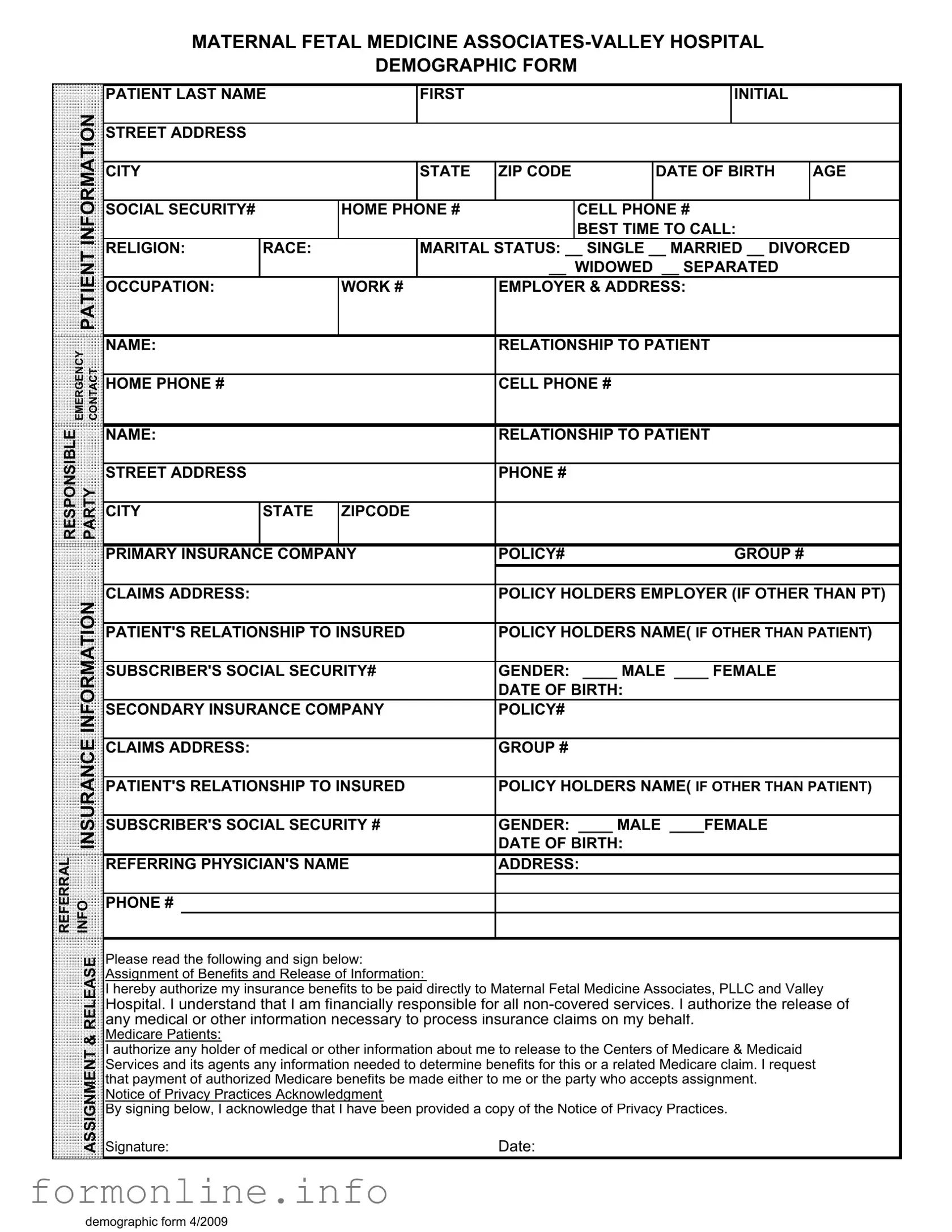The Patient Registration Form serves a similar purpose to the Patient Demographics form. It collects essential information about the patient, including name, contact details, and insurance information. Both forms aim to establish a comprehensive profile of the patient to facilitate communication and billing processes. The Patient Registration Form often includes sections for emergency contacts and insurance details, ensuring that healthcare providers have access to necessary information in a timely manner.
The Medical History Form is another document akin to the Patient Demographics form. While the latter focuses on basic personal and insurance information, the Medical History Form delves into the patient’s health background. It gathers details about past illnesses, surgeries, and family medical history. This information is crucial for healthcare providers to understand the patient’s health context and to tailor treatment plans accordingly.
The Insurance Verification Form is also similar, as it collects specific details about a patient's insurance coverage. This form typically requires information such as policy numbers and group numbers, similar to the insurance sections in the Patient Demographics form. The goal is to ensure that the patient's insurance is active and that the necessary authorizations are in place before services are rendered.
The Consent for Treatment Form shares similarities with the Patient Demographics form by requiring the patient's information to ensure proper identification. This document gives healthcare providers permission to administer treatment, which is critical for legal and ethical reasons. Both forms work together to establish a clear understanding of the patient’s identity and their willingness to receive care.
The Release of Information Form is closely related to the Patient Demographics form, particularly in the context of sharing patient data. This form allows healthcare providers to disclose medical records to third parties, such as insurance companies. It often requires similar personal information to ensure that the right patient’s information is being released, paralleling the identification aspects of the demographics form.
The Emergency Contact Form is another document that aligns with the Patient Demographics form. It specifically gathers information about individuals to contact in case of an emergency. Both forms emphasize the importance of having accurate and up-to-date contact information, ensuring that healthcare providers can reach the appropriate people when urgent situations arise.
The Prescription Information Form also bears similarities to the Patient Demographics form. While the demographics form collects general patient information, the Prescription Information Form focuses on medication history and current prescriptions. Both forms are essential for healthcare providers to manage patient care effectively and to avoid potential drug interactions.
When dealing with transactions involving personal property, it is crucial to have a legal document that clearly outlines the transfer of ownership, such as the Bill of Sale form. This form helps avoid any ambiguities that may arise during the sale process, ensuring both the buyer and seller have a mutual understanding of the agreement. For further information and to obtain a Bill of Sale form, visit georgiapdf.com/.
The Financial Responsibility Form is akin to the Patient Demographics form in that it outlines the patient’s financial obligations regarding their healthcare. This document ensures that patients understand their responsibilities for payment, similar to how the demographics form collects insurance details. Both documents work together to clarify the financial aspects of receiving medical services.
Lastly, the Patient Feedback Form shares some similarities with the Patient Demographics form by collecting information about the patient’s experience. While the demographics form focuses on personal and insurance details, the feedback form gathers insights on the quality of care received. Both forms are vital for improving healthcare services and ensuring patient satisfaction.

